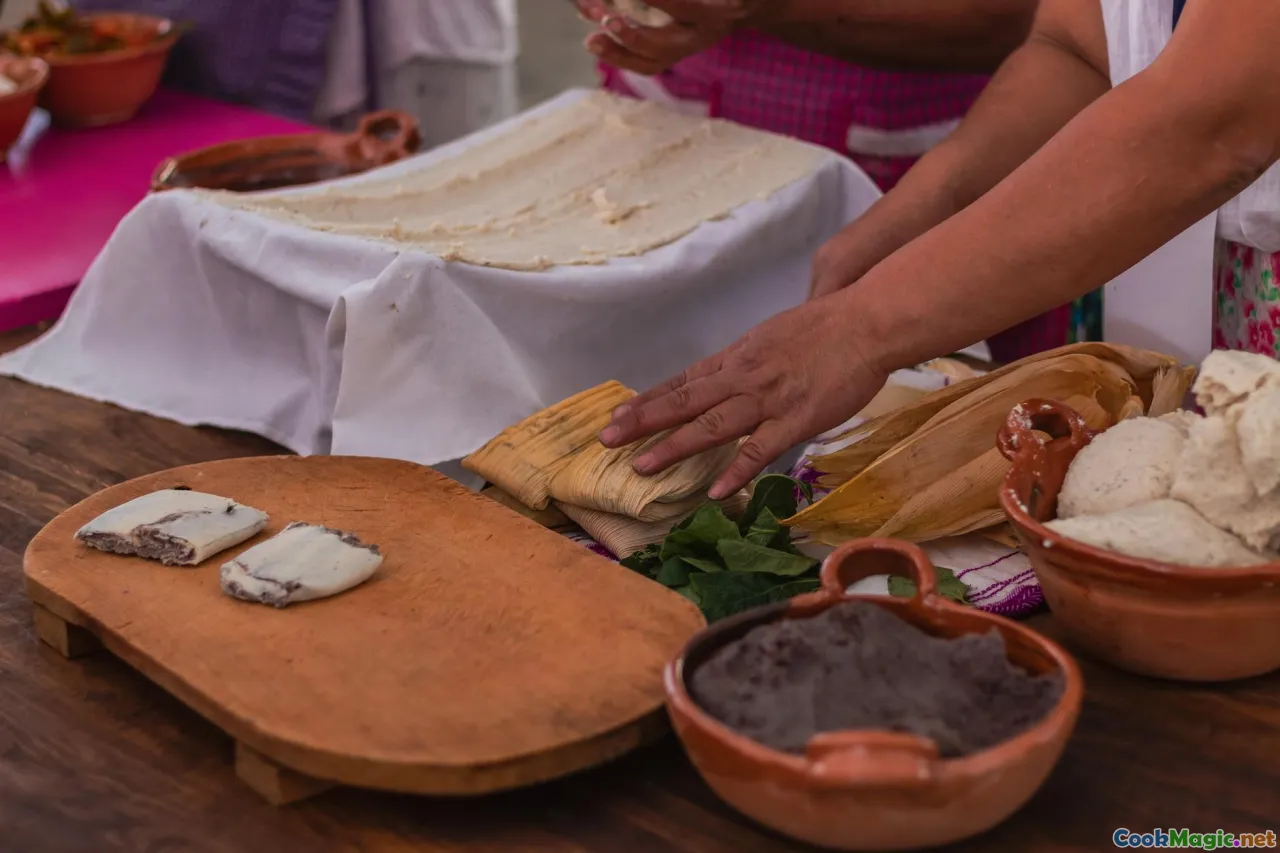Mastering Tamale Dough Techniques for Homemade Perfection
7 min read Discover the art of making perfect tamale dough at home with expert techniques, rich cultural insights, and sensory tips for authentic flavor. May 13, 2025 15:00
Mastering Tamale Dough Techniques for Homemade Perfection
Imagine waking up on a cool morning in a bustling Mexican town, the air thick with the aroma of freshly steamed tamales, their masa soft and fragrant. The tradition of tamale-making isn't just about food; it's a vibrant cultural ritual, a story passed down through generations, woven into the very fabric of Mexican heritage. At the heart of this beloved dish lies the masa — the silky, flavorful dough that transforms simple ingredients into a culinary masterpiece.
The Cultural Significance of Tamales in Mexico
Tamales are more than a staple; they are a symbol of community, celebration, and familial bonds. In Mexico, each region boasts its own twist, from the tender pork-filled tamales of Oaxaca to the sweet, fruit-stuffed variations in Yucatán. These morsels are often prepared during special occasions: Christmas, Día de los Muertos, or local festivals, where families gather around steaming pots, sharing stories and laughter.
Understanding this cultural backdrop enriches our approach to crafting the perfect tamale dough. It's not merely about technique; it’s about honoring tradition and embracing the sensory experience that makes each bite memorable.
The Foundation: Ingredients for Authentic Tamale Dough
Creating authentic tamale dough begins with selecting the right ingredients. The key components include:
- Masa harina: The cornerstone, made from dried corn kernels that have been nixtamalized, offering a distinctive flavor and texture.
- Fat: Traditionally, pork lard is used, imparting richness and a tender crumb, though vegetable shortening or oil can be alternatives.
- Broth: Use warm chicken, pork, or vegetable broth to hydrate the masa and infuse flavor.
- Salt and sometimes spices: For seasoning and enhancing taste.
The quality of each ingredient significantly influences the final product. Fresh masa harina, high-quality fat, and flavorful broth are non-negotiable for achieving that authentic, melt-in-your-mouth texture.
Preparing the Perfect Tamale Dough: Step-by-Step Techniques
Achieving that ideal, fluffy, and cohesive dough requires attention to detail and patience. Here’s a comprehensive guide:
1. Hydrating the Masa
Begin by gradually adding warm broth to the masa harina. The goal is to achieve a moist, pliable dough that doesn't feel sticky but is soft enough to hold together when pressed.
Tip: Use a gentle folding motion to incorporate the broth evenly, ensuring no dry patches remain. This step is crucial for uniform texture.
2. Incorporating Fat
Next, add your fat — traditionally pork lard, which should be softened but not melted. Using a spatula or your hands, beat or knead the fat into the masa until fully integrated. Sensory cue: The dough should become lighter in color and fluffy in texture. When you pinch it, it should hold together without cracking.Alternative: For a vegetarian option, vegetable shortening or oil can be used, but note that the flavor and texture will differ slightly.
3. Achieving the Right Consistency
The hallmark of good tamale dough is its elasticity and cohesiveness. To test:
- Take a small piece of dough and flatten it between your fingers.
- It should spread smoothly without tearing.
- When pressed, it should hold its shape.
If too dry, sprinkle a little more broth; if too wet, add a bit more masa harina.
4. Seasoning and Final Touches
Add a pinch of salt and, if desired, a dash of chili powder or cumin for subtle flavor enhancements. Mix thoroughly.
Personal insight: I often add a splash of chicken broth infused with herbs, which adds depth.
Troubleshooting Common Issues
- Dough too sticky: Add more masa harina gradually.
- Dough too dry: Incorporate additional warm broth.
- Lumpy texture: Ensure thorough mixing and kneading.
Remember, patience and gradual adjustments are key — rushing can compromise the texture.
Sensory Experience: The Art of Recognizing Perfect Dough
The ideal tamale dough offers a rich aroma reminiscent of roasted corn, with a slightly nutty undertone. It should feel silky to the touch, with a light elasticity that springs back when pressed. When cooked, it yields a tender, moist crumb that melds seamlessly with fillings.
Personal Reflections and Tradition
My own journey with tamale dough began in a small kitchen in Puebla, where my abuela emphasized the importance of patience and respect for tradition. The process of mixing, kneading, and tasting is almost meditative, connecting me to centuries of Mexican culinary heritage.
Every batch I make is a tribute to that heritage — a dance of flavors, textures, and memories. The secret lies not just in technique but in the reverence for the craft.
Final Thoughts: Elevate Your Tamale Game
Mastering the art of tamale dough is a rewarding pursuit that beckons home cooks to explore, experiment, and embrace tradition. By understanding the nuances of ingredients, mastering the techniques, and savoring the sensory cues, you can create tamales that rival those from the most renowned Mexican taquerías.
Whether for a family gathering, a cultural celebration, or simply to indulge in the comforting flavors of Mexico, a well-made tamale dough is the foundation of culinary magic. So roll up your sleeves, gather your ingredients, and start your journey toward homemade perfection — because every great tamale begins with a great dough.
¡Buen provecho! And may your tamales always be tender, flavorful, and filled with love.









